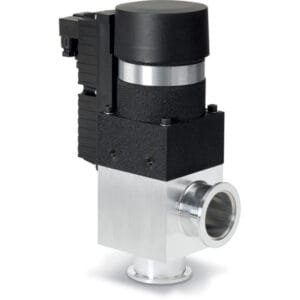KF (QF) HV to Test Port Adapter: Flexible Interface for High-Vacuum Testing Applications
The KF (QF) HV to Test Port Adapter from TFM is purpose-built for integrating KF vacuum flange systems with common test port interfaces, streamlining diagnostic and performance testing operations in high-vacuum environments. This adapter is especially suited for temporary or modular setups where a vacuum line must connect quickly and reliably to 1-1/8” or 2” outer diameter test ports.
Engineered from 304 stainless steel, this adapter offers excellent durability, corrosion resistance, and vacuum compatibility. The KF (QF) flange side provides a quick-clamp interface commonly used in high-vacuum (HV) plumbing, while the opposite end features a smooth cylindrical tube, dimensioned to fit tightly into standardized test ports without threading or welding.
Key Features of KF (QF) HV to Test Port Adapter:
Dual-Diameter Compatibility
Designed to fit either 1-1/8″ or 2″ O.D. test ports, allowing flexible integration across different chamber or manifold test systems.KF Flange Interface
Available in sizes such as KF16, KF25, and KF40, enabling easy clamp-on connection to roughing lines, test equipment, or chamber ports using standard centering rings and clamps.High Vacuum Performance
Compatible with HV systems operating down to 10⁻⁷ torr, when used with appropriate o-rings and centering rings.304 Stainless Steel Construction
Provides mechanical strength, chemical resistance, and cleanroom compatibility for repeated use in demanding environments.Non-Threaded Test Port End
Smooth outer tube design allows easy insertion into test ports—no additional sealing threads or compression fittings required.
Applications:
Temporary vacuum line connection for system leak checking or roughing
Connecting diagnostic tools or gauges via KF plumbing to test port openings
Adapting test benches or vacuum chambers with non-flanged port geometries
Quick setup for portable pump-down systems in lab or field environments
Ideal for use in research labs, QA testing, and semiconductor vacuum validation
TFM also offers a range of KF to baseplate adapters, KF to hose barb adapters, and KF to Welch pump inlet couplings, ensuring seamless integration across diverse vacuum setups.
In conclusion, the KF (QF) HV to Test Port Adapter is a rugged, versatile tool that simplifies the connection between KF vacuum systems and standardized test ports. Whether you’re setting up for leak tests, pressure calibration, or vacuum validation, this adapter ensures a tight fit, clean performance, and minimal setup time.





Reviews
There are no reviews yet.